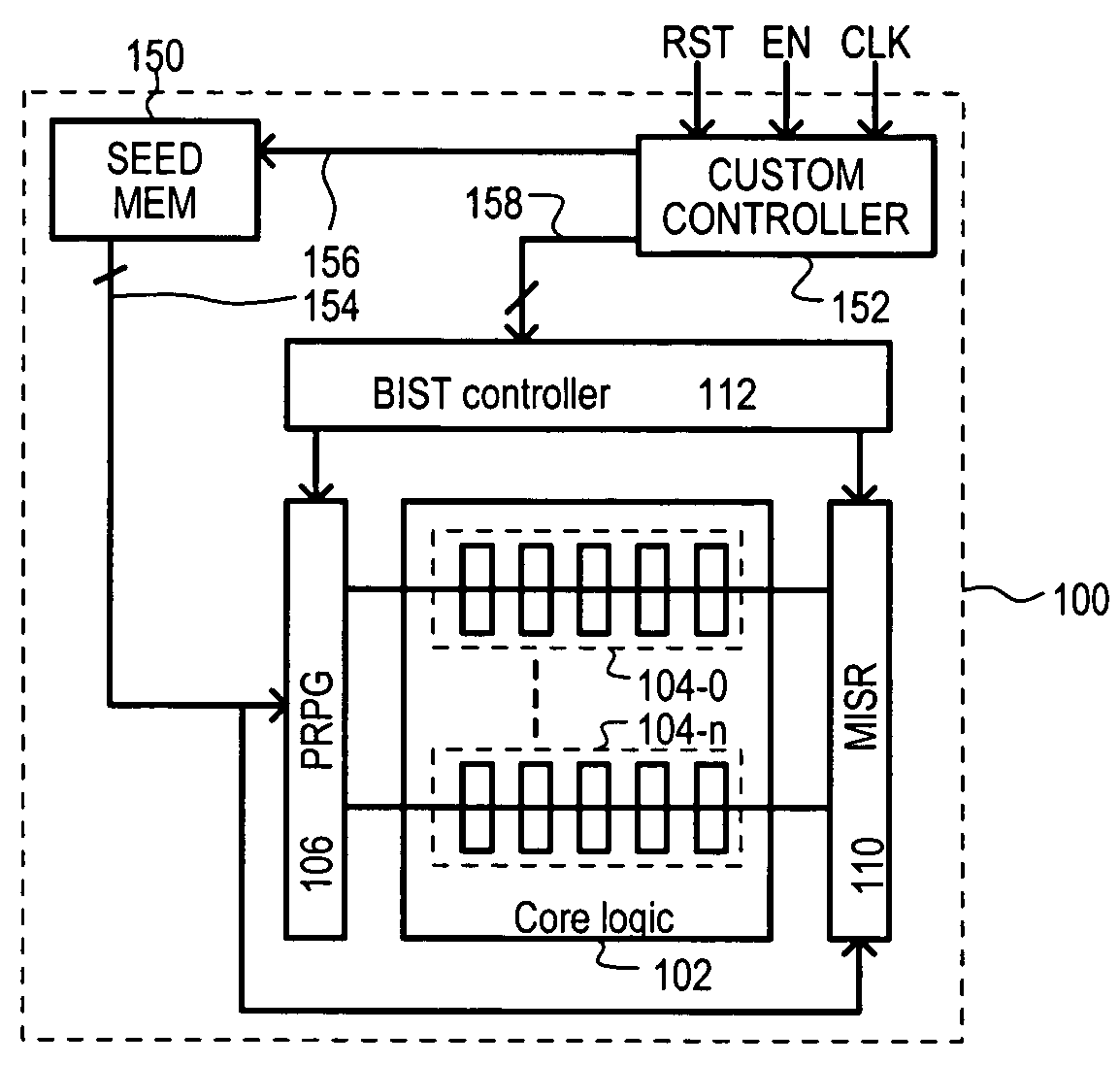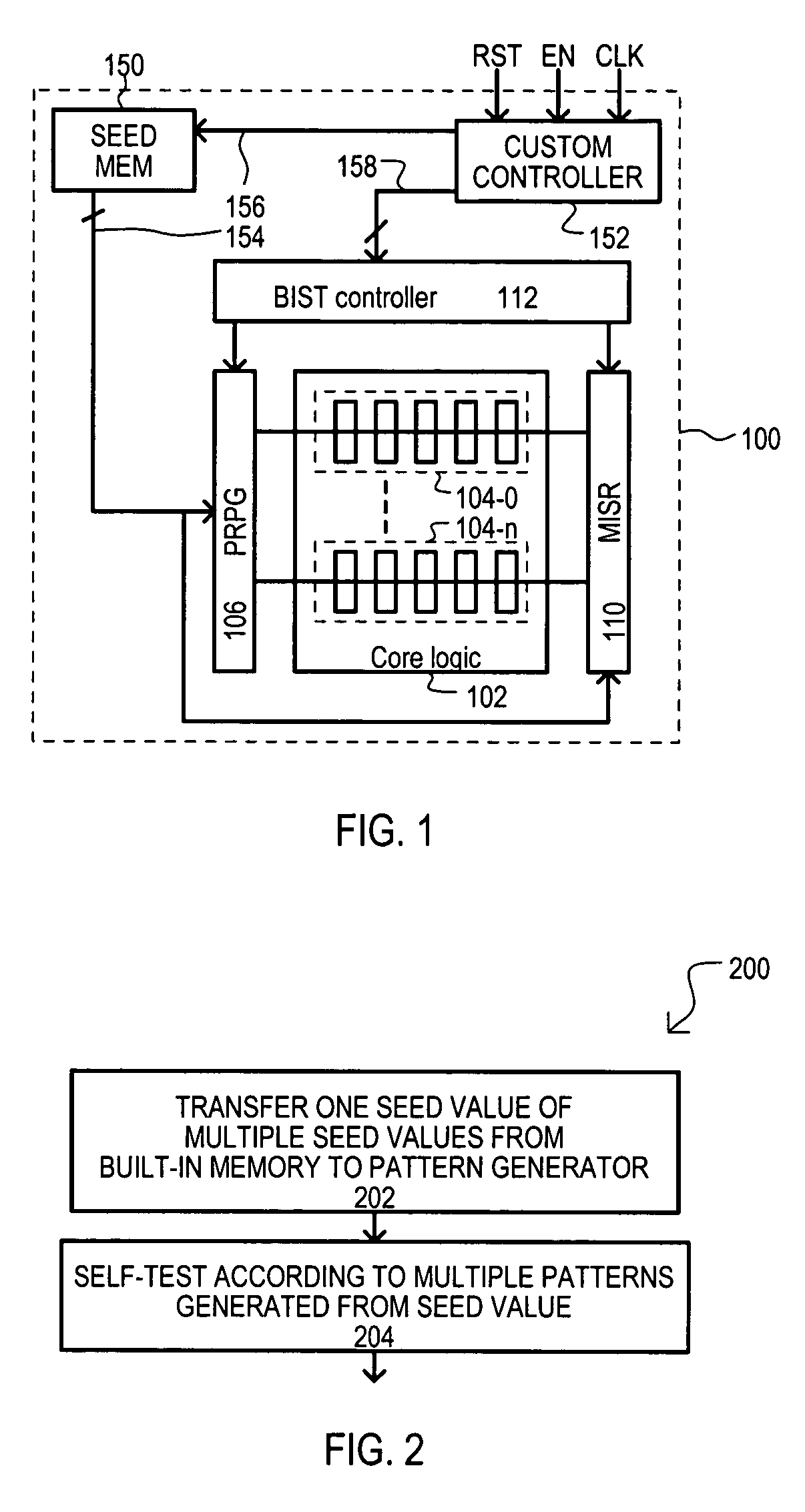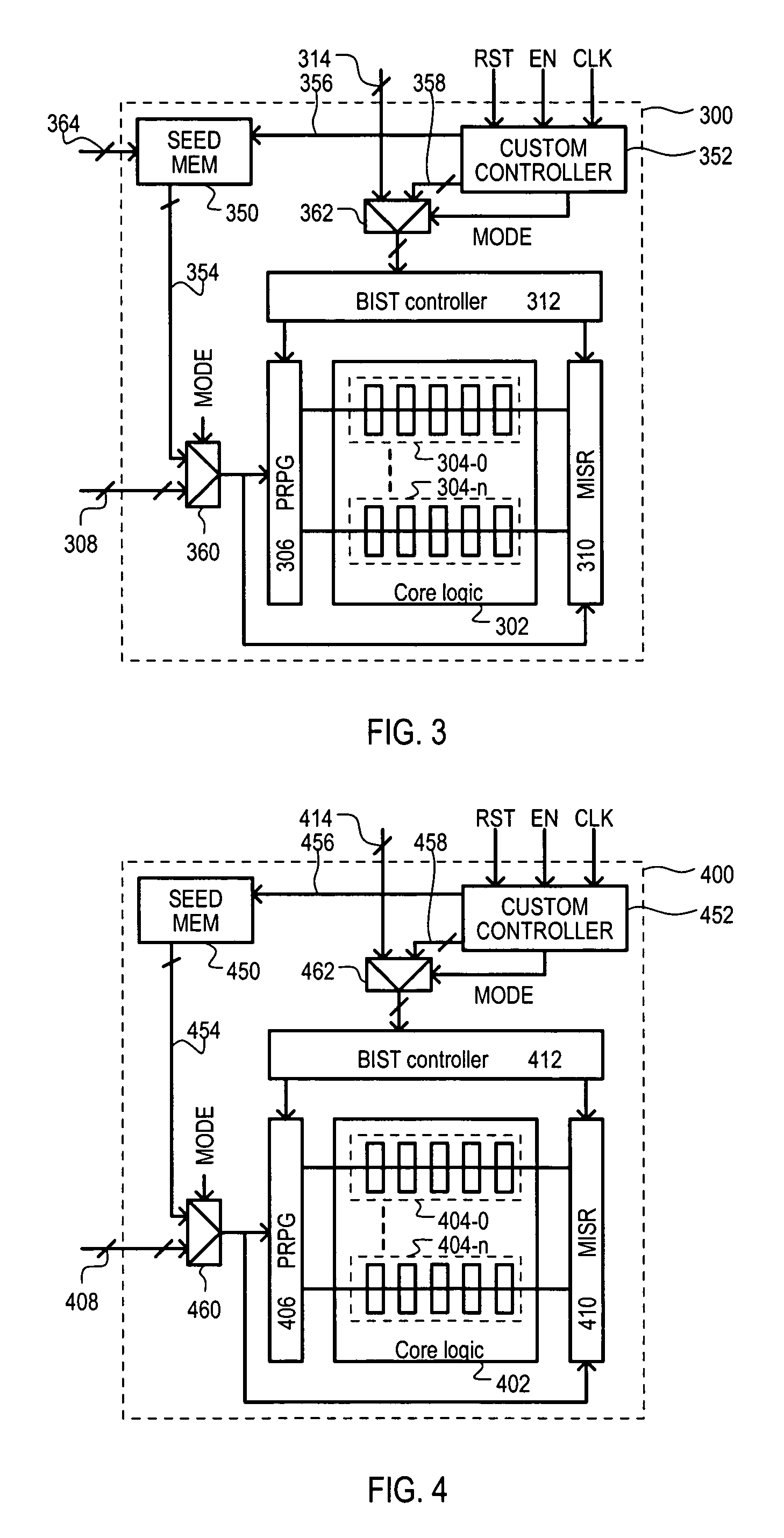Automatic built-in self-test of logic with seeding from on-chip memory
- Summary
- Abstract
- Description
- Claims
- Application Information
AI Technical Summary
Benefits of technology
Problems solved by technology
Method used
Image
Examples
first embodiment
[0053]Referring now to FIG. 1, a BIST section is set forth in a block schematic diagram and designated by the general reference character 100. A BIST section 100 can include a tested section 102, a test pattern generator 106, a result output circuit 110, and a test controller 112. In addition, and unlike conventional BIST arrangements, a BIST section 100 can also include a seed value memory 150 and seed selector circuit 152.
[0054]In one very particular arrangement, a tested section 102 can include a core logic portion. A tested section 102 can be self-tested by way of one or more scan chains (104-0 to 104-n) coupled to and / or incorporated into tested section 102.
[0055]A test pattern generator 106 can generate multiple test patterns in response to a single seed value. A test pattern generator 106 can preferably include a pseudo-random pattern generator (PRPG), more preferably a PRPG that includes a linear feedback shift register (LFSR).
[0056]A result output circuit 110 can preferabl...
second embodiment
[0065]Referring now to FIG. 3, a BIST section is set forth in a block diagram and designated by the general reference character 300. A BIST section 300 can include some of the same items as FIG. 1. Accordingly, like items will be referred to by the same reference character but with the first digit being a “3” instead of a “1”.
[0066]The embodiment of FIG. 3 can differ from that of FIG. 1 in that BIST data and / or control values may be loaded via separate inputs. Such an arrangement can allow for BIST operations to occur by way of seed values already present within an onboard seed memory, or according to seed values received externally on a test input. Thus, the embodiment of FIG. 3 can include a test input 308, a test control input 314, a seed multiplexer 360, a control multiplexer 362, and a memory input 364.
[0067]A seed multiplexer 360 can operate according to a mode value MODE, and enable a seed value to be applied to a test pattern generator 306 from a seed value memory 350 or fro...
third embodiment
[0072]Referring now to FIG. 4, a BIST section is set forth in a block diagram and designated by the general reference character 400. A BIST section 400 can include the same essential items as FIG. 3. Accordingly, like items will be referred to by the same reference character but with the first digit being a “4” instead of a “3”.
[0073]The embodiment of FIG. 4 can differ from that of FIG. 3, in that a seed value memory can be fabricated or otherwise manufactured to include seed values (e.g., mask ROM, fuse-type structures). As such, a memory input (e.g., 364 of FIG. 3) may not be included. This can allow for smaller pin counts and / or fewer signal lines than the embodiment of FIG. 3.
[0074]Having described the structure of various embodiments of the present invention, another method according to an embodiment will now be described with reference to FIG. 5.
[0075]Referring to FIG. 5, a method 500 can include establishing seed values in an onboard memory (step 502). A step 502 can include,...
PUM
 Login to View More
Login to View More Abstract
Description
Claims
Application Information
 Login to View More
Login to View More - R&D
- Intellectual Property
- Life Sciences
- Materials
- Tech Scout
- Unparalleled Data Quality
- Higher Quality Content
- 60% Fewer Hallucinations
Browse by: Latest US Patents, China's latest patents, Technical Efficacy Thesaurus, Application Domain, Technology Topic, Popular Technical Reports.
© 2025 PatSnap. All rights reserved.Legal|Privacy policy|Modern Slavery Act Transparency Statement|Sitemap|About US| Contact US: help@patsnap.com



